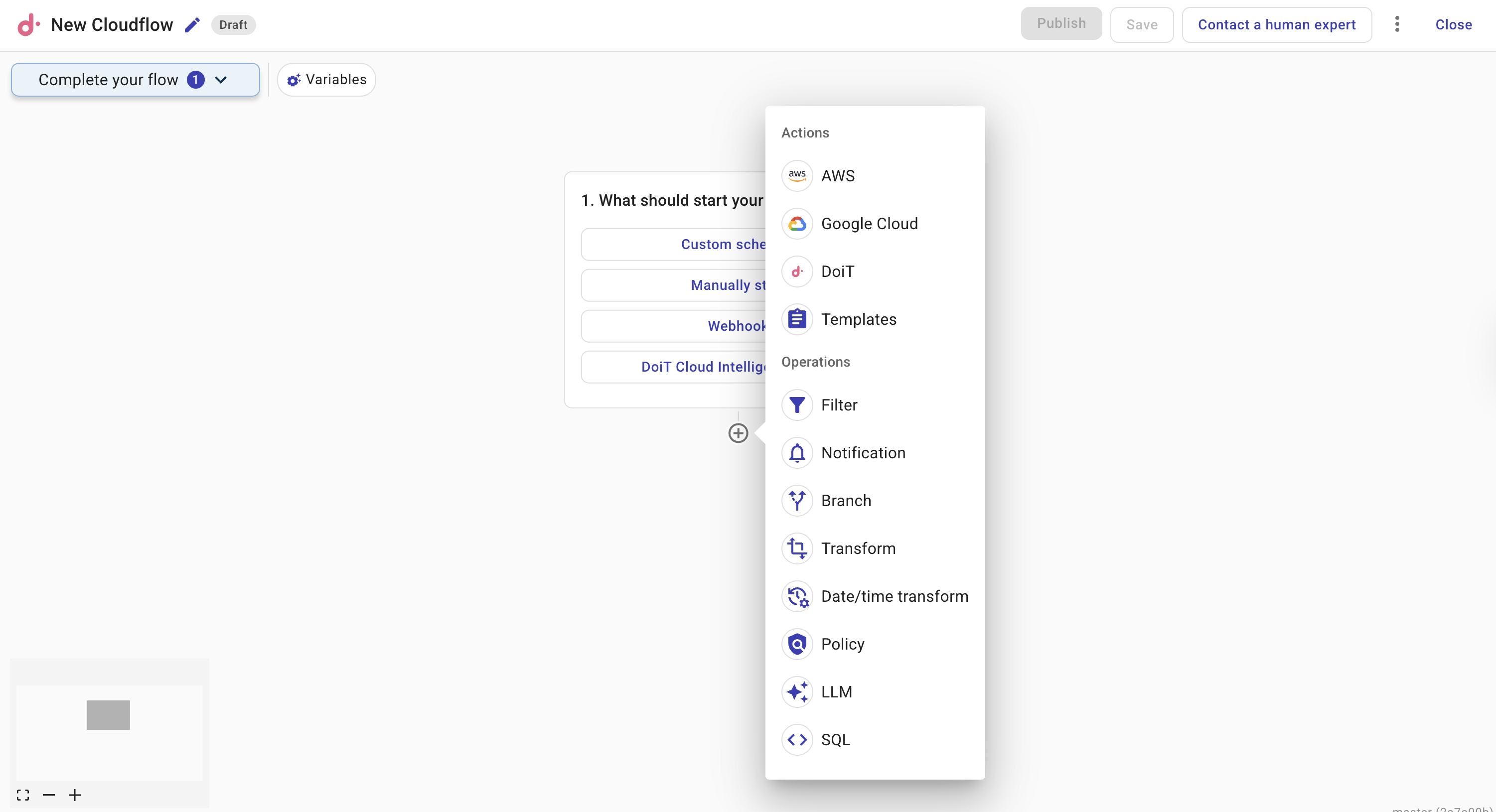Nodes
Once you add a trigger node, you can proceed to adding nodes using the plus icon (+).

A CloudFlow consists of multiple nodes. A trigger node can be followed by any number of nodes. There are two types of node.
-
Actions. An action node provides a unified interface for interaction with AWS, Google Cloud, and DoiT APIs. The resultant data of an action node serve as the data source for operations nodes. In addition, a template node allows you to add a pre-built group of actions to the current CloudFlow. See Perform an action.
-
Operations. An operation node performs operations on the data provided by an action node. Operation nodes can control the sequence of your CloudFlow, control the data that moves through a CloudFlow, and apply transformations to data. See Perform an operation.